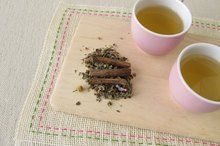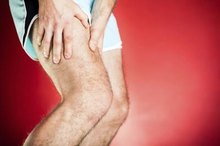What does fact checked mean?
At Healthfully, we strive to deliver objective content that is accurate and up-to-date. Our team periodically reviews articles in order to ensure content quality. The sources cited below consist of evidence from peer-reviewed journals, prominent medical organizations, academic associations, and government data.
The information contained on this site is for informational purposes only, and should not be used as a substitute for the advice of a professional health care provider. Please check with the appropriate physician regarding health questions and concerns. Although we strive to deliver accurate and up-to-date information, no guarantee to that effect is made.
Fibromyalgia Knots
Fibromyalgia knots are hard, ropelike knots that develop in the muscles in fibromyalgia patients. They can occur in just the arms, just the thighs, or all over the body. Although treatment options are available for fibromyalgia knots, there is no cure for fibromyalgia, and the condition can be painful, chronic and long-lasting. Relief, however, is available.
If you are experiencing serious medical symptoms, seek emergency treatment immediately.
Background
Fibromyalgia occurs in 3 to 5 percent of the population 1. Most patients diagnosed with fibromyalgia are women, but the syndrome also occurs in men and children. Nearly 25 percent of people with fibromyalgia are work-disabled. Overall pain in all the muscles of the body is the biggest and most common symptom, and fibromyalgia knots that develop in the muscles further aggravate the condition.
- Fibromyalgia occurs in 3 to 5 percent of the population 1.
- Most patients diagnosed with fibromyalgia are women, but the syndrome also occurs in men and children.
Identification
Knots & Pain in Lower Leg
Learn More
Fibromyalgia knots, sometimes called fibro-knots, can be felt as hard lumps in the muscle. They are usually painful, and when pressure is exerted on the knot, pain can radiate to the surrounding muscles. Most patients get them in their arms, legs and knees, although they can appear anywhere. They also can appear in groups, or just as a single knot.
- Fibromyalgia knots, sometimes called fibro-knots, can be felt as hard lumps in the muscle.
- Most patients get them in their arms, legs and knees, although they can appear anywhere.
Causes
Fibromyalgia knots are sometimes the result of a buildup of lactic acid in the muscle. Another cause can be a dysfunctional healing response found in fibromyalgia patients: the fibroblast, the major cell of the intramuscular connective tissue, secretes pro-inflammatory cytokines, causing painful inflammation. The Oregon Health and Science University found dysfunction of the intramuscular connective tissue in fibromyalgia. This fascia inflammation leads to overall sensitization, or pain.
- Fibromyalgia knots are sometimes the result of a buildup of lactic acid in the muscle.
- The Oregon Health and Science University found dysfunction of the intramuscular connective tissue in fibromyalgia.
Prevention
Low Potassium & Fibromyalgia
Learn More
While there has been no proven cure, several steps can prevent the formation of fibromyalgia knots. Drinking plenty of water flushes out toxins that aggravate fibromyalgia symptoms. A fiber supplement that is not habit forming can help flush out toxic internal matter, too. Gentle exercise such as yoga help keep the lymph system moving. This prevents overall pain, which in turn helps prevent the dysfunctional immune response.
- While there has been no proven cure, several steps can prevent the formation of fibromyalgia knots.
Solutions
Gentle massage and heat can help soothe and release the fibromyalgia knots 1. Massotherapy also releases the knots. Muscle relaxers such as Soma and Zanaflex can sometimes help. Lyrica is a pain medication developed specifically for fibromyalgia that can help alleviate the discomfort, although it can't fix the knots. Serratiopeptidase, an over-the-counter remedy, is an enzyme that digests the proteins causing pain and inflammation. It has been effective in treating fibromyalgia patients who are sensitive to medication.
- Gentle massage and heat can help soothe and release the fibromyalgia knots 1.
- Serratiopeptidase, an over-the-counter remedy, is an enzyme that digests the proteins causing pain and inflammation.
Related Articles
References
- Centers for Disease Control and Prevention: Fibromyalgia
- Fibromyalgia Q & A. National Institutes of Health (NIAMS). July 2014.
- Fibromyalgia. American College of Rheumatology. May 2015.
- Fibromyalgia. Chapter 52. Kelley's Textbook of Rheumatology. Elsevier. Ninth Edition.
Writer Bio
Jennifer Collins has been writing both fiction and non-fiction since 2001. She's written several pop-culture essays published in "Perfectly Plum" and "Ardeur." Before her writing career, Collins was a pianist and teacher who did her undergraduate and graduate studies at the Cleveland Institute of Music, majoring in piano performance.









